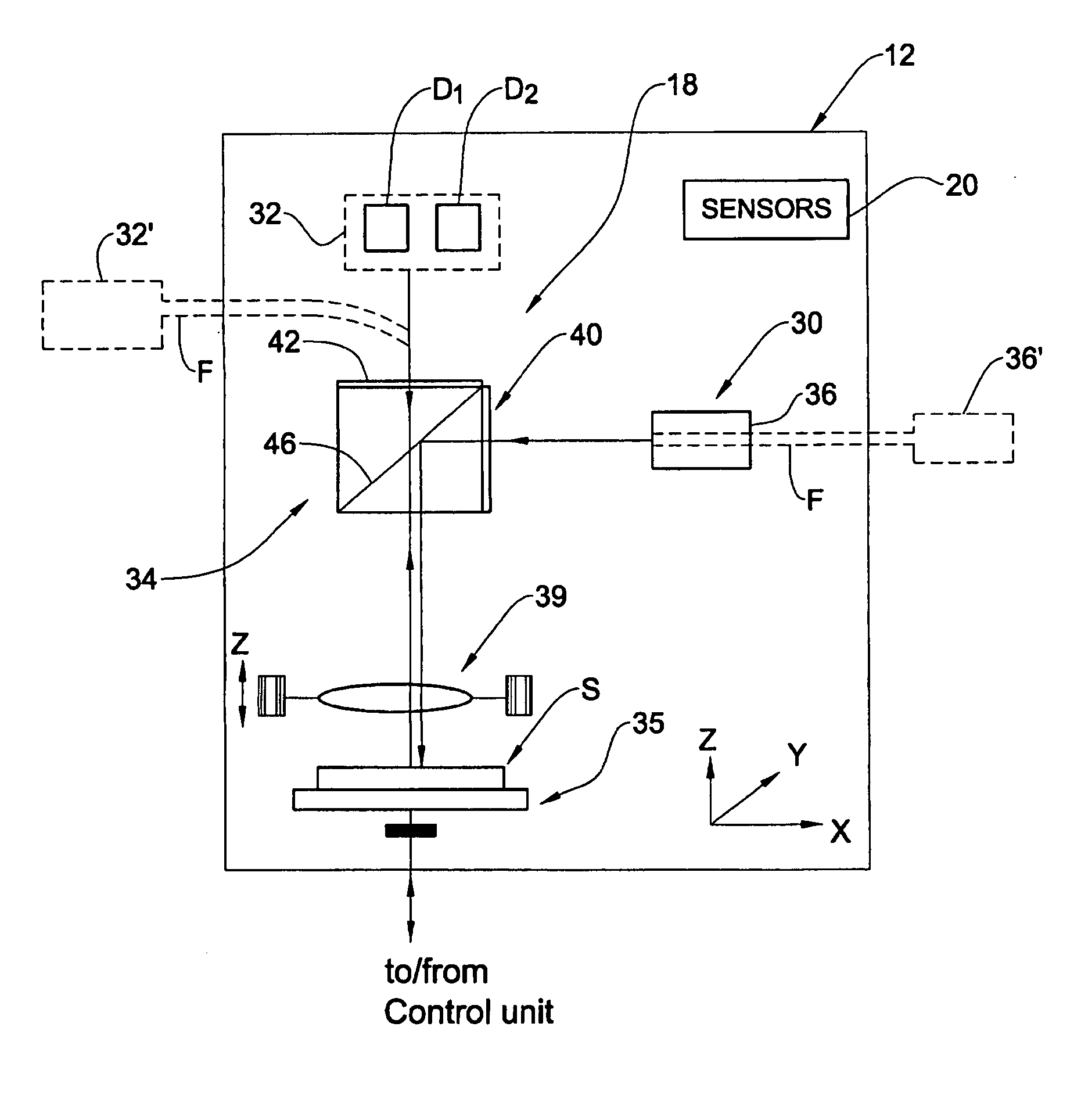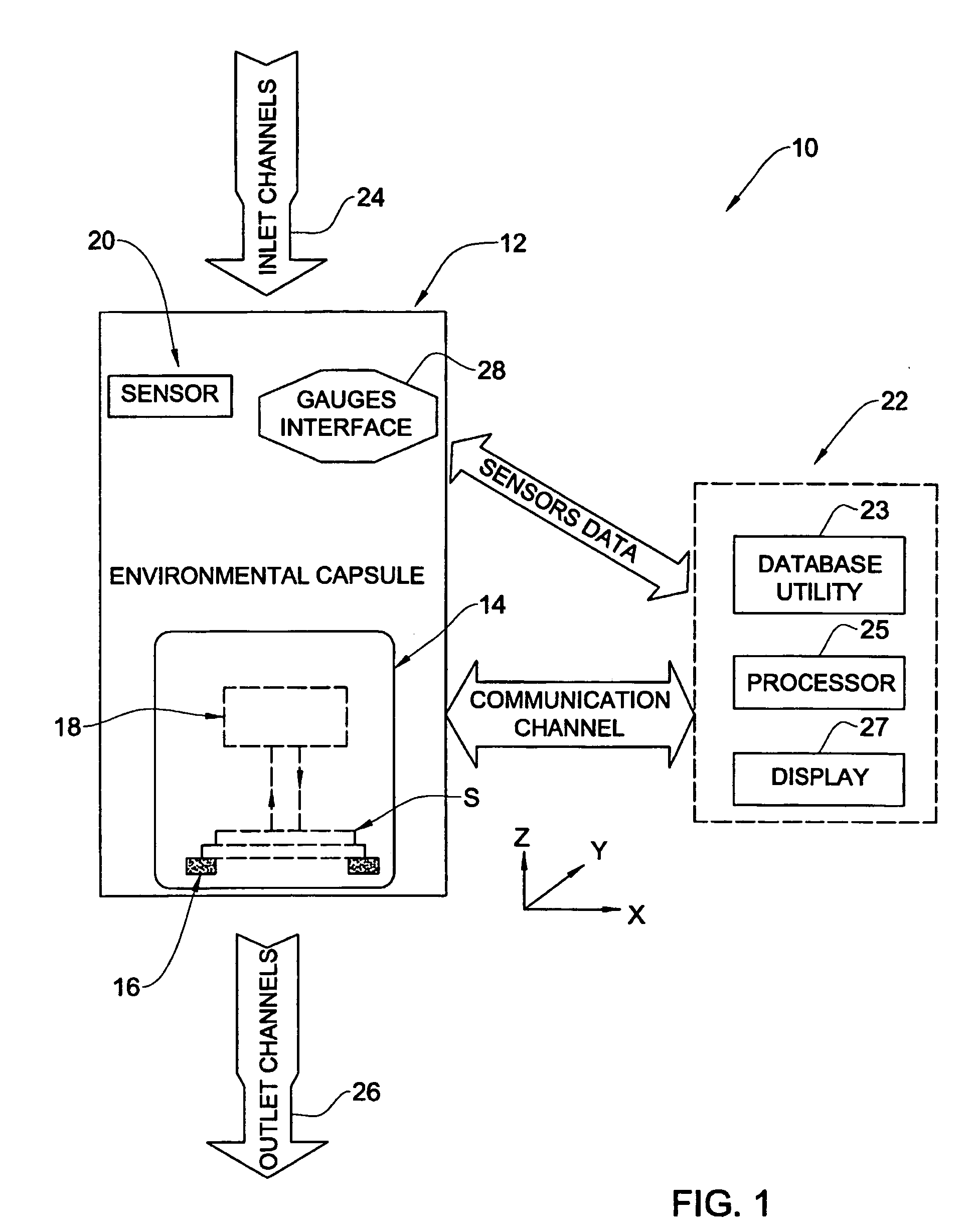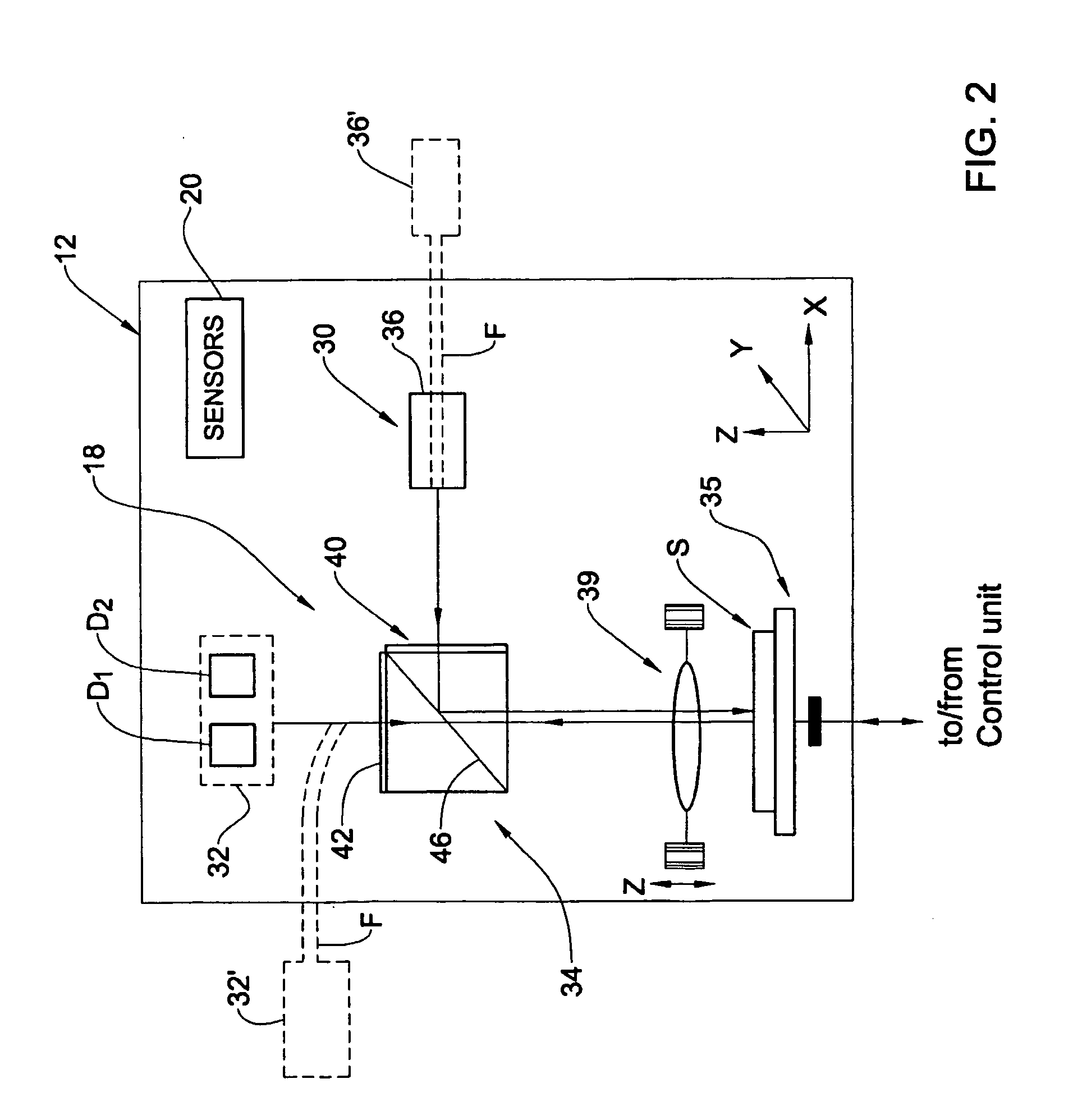[0010] The use of fluorescent probes routinely for diagnostic purposes creates new standards and demands for a fluorescent detection system. Such a system must provide a complete and full solution for a fluorescent-based diagnosis. The system must be characterized by a high
throughput capability, high levels of
automation, a simple graphic
user interface (GUI) that enables minimal user operating mistakes and thereby allows for layman operation of the system, a high level of reliability and accuracy, and last but not least, it must be economically beneficial.
[0012] The technique of the present invention thus provides a unique platform that complies with the new demands arising from turning the latest research techniques in
fluorescence into tomorrow's
diagnostic tools. The system and method of the present invention makes up a Fluorescent Working
Station (F-WOS) constructed and operated to provide optimal conditions for acquiring high-end fluorescent images (i.e., the combination of low
light sensing, small size and
high magnification, together with the enhanced
image processing and control) from biological samples for research and diagnostic tasks, and to provide optimal conditions for the sample, fluorescent signals, operator, and all other personal working in the lab. By designing a complete system especially for fluorescent diagnostics, the high performance, high
throughput, and low price system is obtained. It should be noted that fluorescent signals, for diagnostic tasks, are characterized by a low light (about 0.001
lux), capability of detecting small size fluorescent labels (0.1-0.4 microns), fast fluorescent intensity decay with time (bleaching), and environmental sensitivity. This means that in
fluorescent imaging, working on the “edge” of technology is required, and it is thus crucial to address the fluorescent
signal quality issues, as well as the
imaging quality issues, for obtaining the best results.
[0013] The F-WOS of the present invention is the first fluorescent-based system that makes a significant effort in improving the quality of the fluorescent signals, and not just improving the quality of the acquired images. The F-WOS enables to easily load a fluorescent slide into the capsule, automatic scanning of the slide in the X,Y,Z planes at the appropriate resolution and speed, searching for the designated regions of interest
on the fly, and optimal acquisition of the required images for research and diagnosis needs.
[0015] Preferably, the capsule comprises one or more sensors for sensing the environment condition(s) inside the capsule to be controlled, and inlet and outlet means enabling to desirably affect the corresponding condition(s) inside the capsule. The capsule thus presents a “controlled environmental capsule” (CEC). The sensors suitable to be used in the capsule include at least one of the following: a temperature sensor, an ambient light sensor, an
electromagnetic radiation sensor,
oxygen or other gases' sensor, and a
humidity sensor. The CEC is designed to protect the
biological media and the fluorescent probes therein from environmental hazards, and to provide them with optimal conditions during the imaging. For example, the capsule protects the sample from unwanted light in the room, high temperature, and the presence of
oxygen, causing the sample to fade quickly (the Bleaching phenomena). Providing these optimal conditions for the fluorescent sample improves the quality of the fluorescent signals. The CEC also provides protection for the operating personal from hazardous conditions of the system such as the use of UV light. Furthermore, the encapsulation of the sample with the optical device enables installation of the working
station in any room or laboratory, without the necessity to darken the room when working with the fluorescent signals, thus stopping all other activities in the laboratory at that time.
[0018] The device further includes a scanning system, which enables scanning the sample at different resolution and speeds at the X, Y and Z directions (3D scanning). The scanning system supports the ROI search and identification, preferably utilizing also auto-focusing abilities, and provides the F-WOS with the ability to automatically detect a large amount of fluorescent signals in a short period of time.
 Login to View More
Login to View More  Login to View More
Login to View More 


